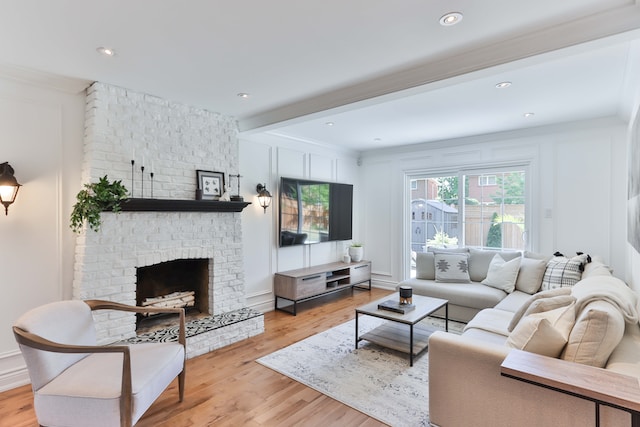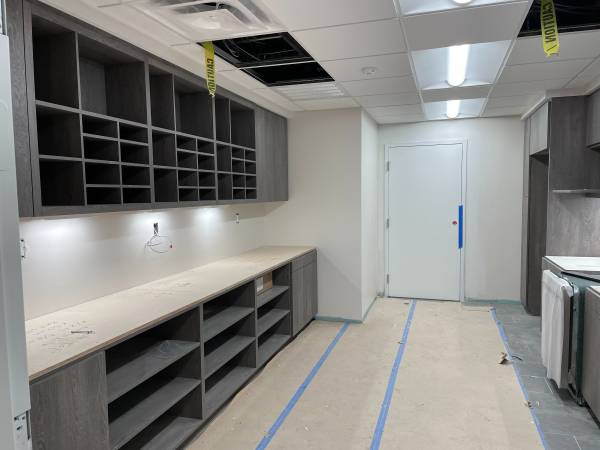Table of Contents
Assessing the Condition of the Walls
Before beginning any painting project, it is imperative to thoroughly assess the condition of the walls. Start by closely examining the surface for any signs of damage such as cracks, holes, or peeling paint. Take note of any areas that may require repairs or additional preparation before proceeding with painting.
Furthermore, check for any imperfections like uneven textures or bumps that could impact the final look of the paint. It is crucial to address these issues beforehand to ensure a smooth and flawless finish. By carefully scrutinizing the walls, you can effectively plan and execute the necessary steps to achieve professional results in your painting project.
Identifying and Repairing Cracks and Holes
To effectively tackle any cracks or holes in your walls, it’s essential to conduct a thorough inspection of the surface. Begin by examining the walls closely, running your hands over the areas to feel for any irregularities. Use a flashlight to spot hidden imperfections that may not be immediately visible. Taking the time to identify all the cracks and holes ensures a comprehensive repair job that will result in a smooth and flawless finish.
Once you have identified the cracks and holes, it is crucial to address them promptly to prevent further damage. Use a putty knife to apply spackling compound or joint compound to fill in the cracks and holes. Ensure that the compound is applied evenly and smoothly, allowing it to dry completely before sanding the area to create a seamless surface. By attending to these imperfections with precision and care, you lay the foundation for a pristine paint job that enhances the overall aesthetic appeal of your space.
Cleaning the Walls
Begin by thoroughly dusting the walls using a soft cloth or duster to remove any loose dirt and debris. Be attentive to corners and baseboards where dust tends to accumulate. Once the walls are dust-free, prepare a solution of warm water and mild dish soap. Dampen a sponge or cloth with the soapy water and gently scrub the walls in small sections, working from top to bottom. Avoid using excessive water to prevent damage to the wall surface.
After cleaning the walls with the soapy solution, rinse them with a clean sponge dampened with plain water. Make sure to remove any soap residue to prevent streaking or discoloration. For stubborn stains, use a mild solution of vinegar and water or a specialized wall cleaner. Test the cleaner on a small, inconspicuous area first to ensure it does not damage the paint or wall finish. Once the walls are clean and free of any stains or residue, allow them to dry completely before proceeding with any further preparations or painting.
Sanding the Walls
When sanding the walls, it is crucial to start by using a coarse-grit sandpaper to efficiently remove any imperfections, bumps, or old paint. Ensure to move the sandpaper in a circular motion with gentle pressure, covering the entire surface evenly. Once the initial sanding is complete, switch to a finer-grit sandpaper to smooth out the walls further and create a flawless base for painting. Remember to wipe down the walls with a damp cloth after sanding to remove any dust or debris, allowing for a clean surface to work with.
After sanding the walls, take the time to inspect the areas for any remaining rough patches or inconsistencies. Use a sanding block to target specific areas that may require extra attention, ensuring the walls are smooth to the touch and visually consistent. Proper sanding is a crucial step in the painting process as it not only improves the overall appearance of the walls but also helps the new paint adhere better for a long-lasting finish.
Removing Old Paint or Wallpaper
To effectively prepare the walls for a fresh coat of paint, it is essential to carefully remove any existing old paint or wallpaper. This process requires patience and attention to detail in order to achieve a smooth and clean surface for the new paint to adhere to. Prior to beginning the removal, ensure you have the necessary tools such as a paint scraper, sandpaper, and a wallpaper steamer if needed.
When removing old paint, start by using a paint scraper to gently peel away the layers of paint. Work methodically, taking care not to damage the underlying surface. Once the majority of the paint has been removed, use sandpaper to smoothen out any remaining rough patches. If dealing with wallpaper, use a wallpaper steamer to loosen the adhesive before carefully peeling it off the wall. Be thorough in this process to ensure a seamless finish once the walls are ready for a fresh coat of paint.
Priming the Walls

Before moving on to applying the final coats of paint, it is crucial to properly prime the walls. Priming serves as a foundation for the paint to adhere to, ensuring a smooth and long-lasting finish. Be sure to choose a high-quality primer that is suitable for the surface you are working with. This step is essential for achieving optimal coverage and enhancing the color of the paint.
Applying primer also helps to seal the surface, preventing stains and discoloration from bleeding through the new paint. It also helps to create a uniform surface, especially when dealing with patched areas or different textures on the walls. Remember to follow the manufacturer’s instructions for the specific primer you are using, and allow sufficient drying time before proceeding with the painting process.
Choosing the Right Paint and Tools
To ensure a successful painting project, selecting the appropriate paint and tools is crucial. When it comes to choosing paint, it is essential to consider factors such as the surface you will be painting, the existing color, and your desired finish. Different paints offer various benefits, so it is important to select the one that best suits your needs. Additionally, investing in high-quality paint will result in a more durable and visually appealing finish.
In terms of selecting the right tools, having the correct equipment can make a significant difference in the final outcome of your project. Brushes, rollers, and paint sprayers are common tools used for painting, each serving a specific purpose. It is essential to choose tools that are appropriate for the surface you are painting and the type of paint you are using. By investing in quality tools, you can ensure a smoother application and a professional-looking finish.
Protecting Floors and Furniture
Covering floors and furniture with drop cloths or plastic sheeting is essential before starting any painting project. This precaution helps in preventing paint spills, drips, or splatters from damaging surfaces and furniture. Additionally, it saves time and effort by avoiding the need for extensive cleaning after the painting is complete. Investing in quality protective materials for floors and furniture demonstrates a commitment to professionalism and attention to detail in the painting process.
Prioritizing the protection of floors and furniture not only maintains the cleanliness and integrity of these surfaces but also contributes to a smooth and efficient painting job. By carefully securing drop cloths or plastic sheeting in place, the risk of accidental damage is significantly reduced, allowing the painter to focus on the task at hand without unnecessary interruptions. Remember, a proactive approach to protecting floors and furniture exemplifies a high standard of workmanship and sets the foundation for a successful painting project.
Taping off Trim and Edges
To achieve clean and precise edges when painting, the process of taping off trim and edges is crucial. Begin by selecting high-quality painter’s tape that is suitable for the surface you are working with. Carefully apply the tape along the edges of the trim, baseboards, and any other areas where you want to create a crisp line between the wall and the painted surface. Press down firmly on the tape to ensure it adheres well and prevents paint from bleeding through.
Take your time when taping off trim and edges, as this meticulous step can make a significant difference in the overall appearance of the finished paint job. Ensure that the tape is applied straight and evenly along the edges to maintain consistency throughout the project. Once the tape is in place, run a putty knife or similar tool along the edge of the tape to seal it tightly and prevent any paint from seeping underneath.
Applying Paint to the Walls
Once all the necessary preparations have been completed, it is time to begin applying paint to the walls. Using a high-quality roller or brush, start by cutting in the edges and corners of the walls with a steady hand. This technique helps create a clean and precise finish along the trim and edges. Work in small sections at a time to ensure the paint stays wet for seamless blending.
Once the edges are painted, move on to the larger sections of the walls, applying paint in smooth, overlapping strokes for even coverage. Be mindful of any drips or excess paint, as these can create an uneven surface and detract from the overall appearance. Work methodically from top to bottom, ensuring that each section is fully coated before moving on. Proper application technique is key to achieving a professional-looking paint job that enhances the beauty of the space.
Using Proper Painting Techniques
To ensure a successful paint job, it is crucial to utilize proper painting techniques. One key element is to always paint in the same direction, whether it’s up and down or side to side. Consistency in your strokes will help create a smooth and even finish on the walls, avoiding any streaks or buildup of paint in certain areas. Additionally, be sure to maintain a steady hand and apply an even amount of pressure throughout the painting process to achieve a professional-looking result.
Furthermore, it’s essential to overlap your strokes slightly as you paint to prevent any gaps or missed spots. This technique ensures full coverage and helps blend the paint seamlessly. Remember to check your work periodically to address any drips or uneven areas promptly. By employing these proper painting techniques, you can elevate the overall quality of your paint job and achieve a polished look that will enhance the aesthetics of the space.
Allowing Sufficient Drying Time
After applying the final coat of paint to the walls, it is crucial to allow sufficient drying time before any further handling. Rushing this step can lead to smudges, uneven finishes, and potential damage to the newly painted surface. Most paint cans specify a recommended drying time between coats, which should be strictly adhered to for optimal results.
It is essential to remember that factors such as humidity, temperature, and ventilation can affect the drying time of paint. To ensure a professional and flawless finish, patience is key during this stage of the painting process. Inspecting the walls for any signs of wetness or tackiness before proceeding with additional coats or removing masking tape will guarantee a successful outcome.
Applying Additional Coats if Necessary
Once the initial coat of paint has dried completely, it’s important to assess the overall coverage and consistency of the finish. In some cases, applying a second or even third coat may be necessary to achieve the desired look and durability. To ensure a professional result, carefully inspect the walls for any thin or uneven areas that may require additional coats.
When applying additional coats of paint, remember to follow the same technique and application method as the initial coat to maintain a consistent finish. Allow each coat to dry thoroughly before applying the next one to prevent any streaks or smudges. By taking the time to assess the coverage and applying additional coats if necessary, you can achieve a smooth and flawless paint job that will enhance the overall appearance of the room.
Removing Tape and Cleaning Up
After the final coat of paint has dried to a flawless finish, it is time to carefully remove the painter’s tape. Start by gently pulling the tape away from the wall at a 45-degree angle to ensure clean lines and prevent peeling off any fresh paint. Take your time and pay attention to any areas where the tape may have slightly bled through, using a precise tool to smooth out any imperfections.
Once the tape has been successfully removed, it is crucial to take the necessary steps to clean up the workspace. Begin by gathering all tools and materials used during the painting process and properly storing them away for future use. Next, wipe down any splatters or drips on floors, furniture, or trim with a damp cloth to maintain a professional and polished look to your freshly painted walls.
Inspecting the Finished Job
Upon completion of the painting process, a thorough inspection of the finished job is essential to ensure quality and satisfaction. Begin by carefully assessing the overall appearance of the walls for any irregularities such as missed spots, drips, or uneven paint application. Take note of any areas that may require touch-ups or further attention.
Next, inspect the edges and trim to ensure clean lines and crisp edges. Any paint bleed or smudges should be promptly addressed for a polished finish. Additionally, verify that the paint has dried evenly and smoothly without any visible imperfections. A meticulous inspection will guarantee a professional outcome that meets your standards and enhances the overall appearance of the space.

